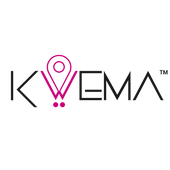2022 has finally arrived and, just like everyone else, you set personal and professional goals for the coming year. As a safety and security professional, we continue to ask the question “how can we continue to build a safer workplace environment for our employees?” This is our main focus for 2022 and we hope you join us to help achieve it.
Building a safer, more secure workplace requires teamwork and planning, and there’s no better time to start than the first week of January. In this blog we explore the new-years resolutions coming from security professionals across a number of different industries and explain why it may be a good idea to consider them for this year.

safetyfirst
4. Invest in more training and drill simulations
Accidents and emergencies have the characteristic of happening at any moment, therefore having a well-developed safety and security plan on paper isn't ever enough. Just because you created and know the protocol, doesn’t mean your employees do.
Take the time to share, explain, and collaborate on a comprehensive protocol. Once that protocol is formed, conduct regularly scheduled drills and ensure any new-hires are up-to-speed with the latest information regarding evacuation procedures. This is an investment that can have a hidden, yet very impactful return on investment.
3. Update Security Systems with latest Technology
Safety and security have now become synonymous with technology. The industry has evolved so quickly in such little time that security cameras and access cards are now standard protocol. However, incidents and emergencies continue to persist, making new technologies and gadgets attractive to security professionals.
Safety wearables are the latest trend in safety tech and can easily provide an extra layer of security to your organization. The Kwema Smart Badge™ is one that allows employees to quickly send an alert with precise indoor location data your on-site security team. In just three seconds your security staff can be notified, reducing incident response time and increasing the chances of saving lives. Learn more about it here.

2. Improve Employee Participation and Engagement
Organizational culture plays a huge role when it comes to worker´s safety. An engaged employee is a team player and solution oriented. As we know, safety and security is a continuous process of preparedness and response.
Establishing communication lines and developing a culture of safety through horizontal leadership is important for achieving a safe workplace. Allow employees to participate and voice their opinion through surveys or all-hands meetings.
1. Involve all departments
From custodians to administration, nobody is exempt from risk at your facility. In terms of strategy, it is always a best practice to involve every department on safety and security protocol. Create an annual schedule and rotate the different departments throughout the quarter. Remember that an organization is like a gear, in order to function all pieces must be working, no matter how large of a role they play in the company.
Remember
In the end, drafting realistic security and safety goals is the most important piece of all. Take everything you learned last year and apply it to this year. Use SMART as a guide to see what is the best fit for your organization:
